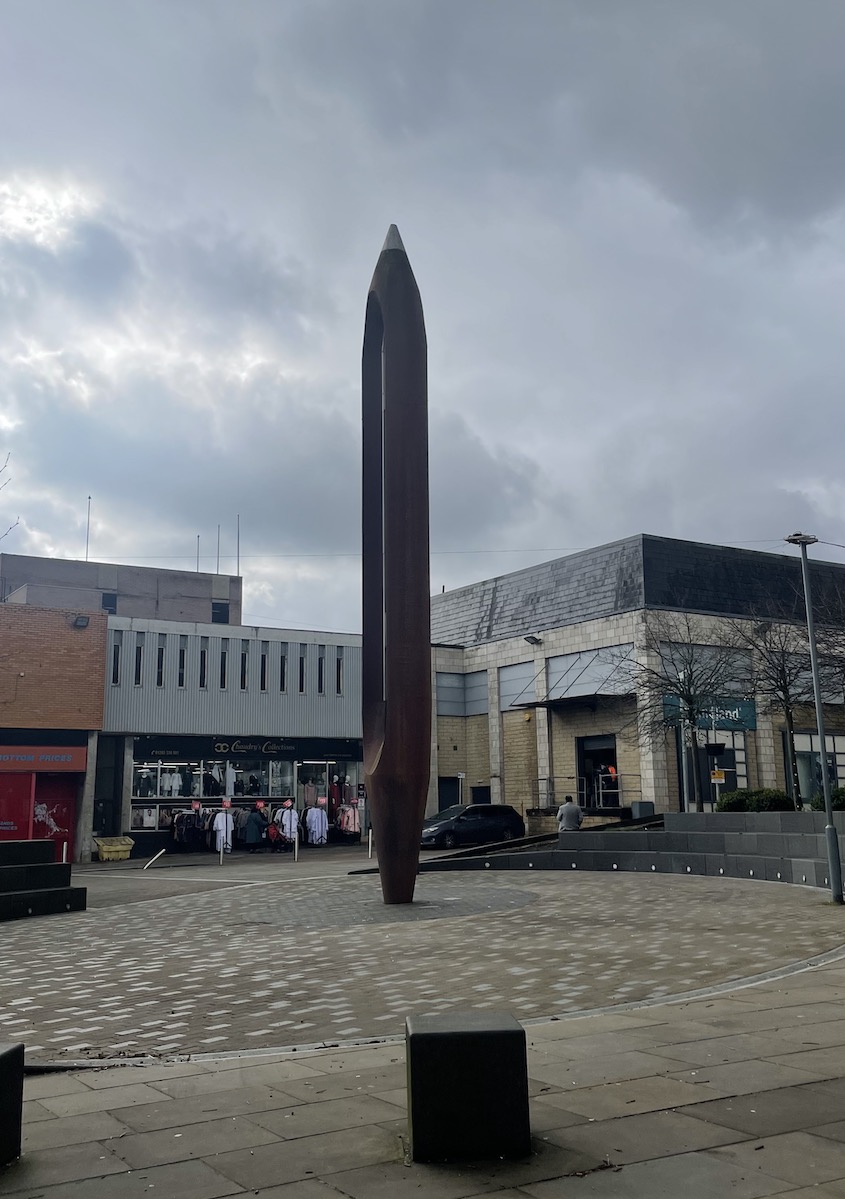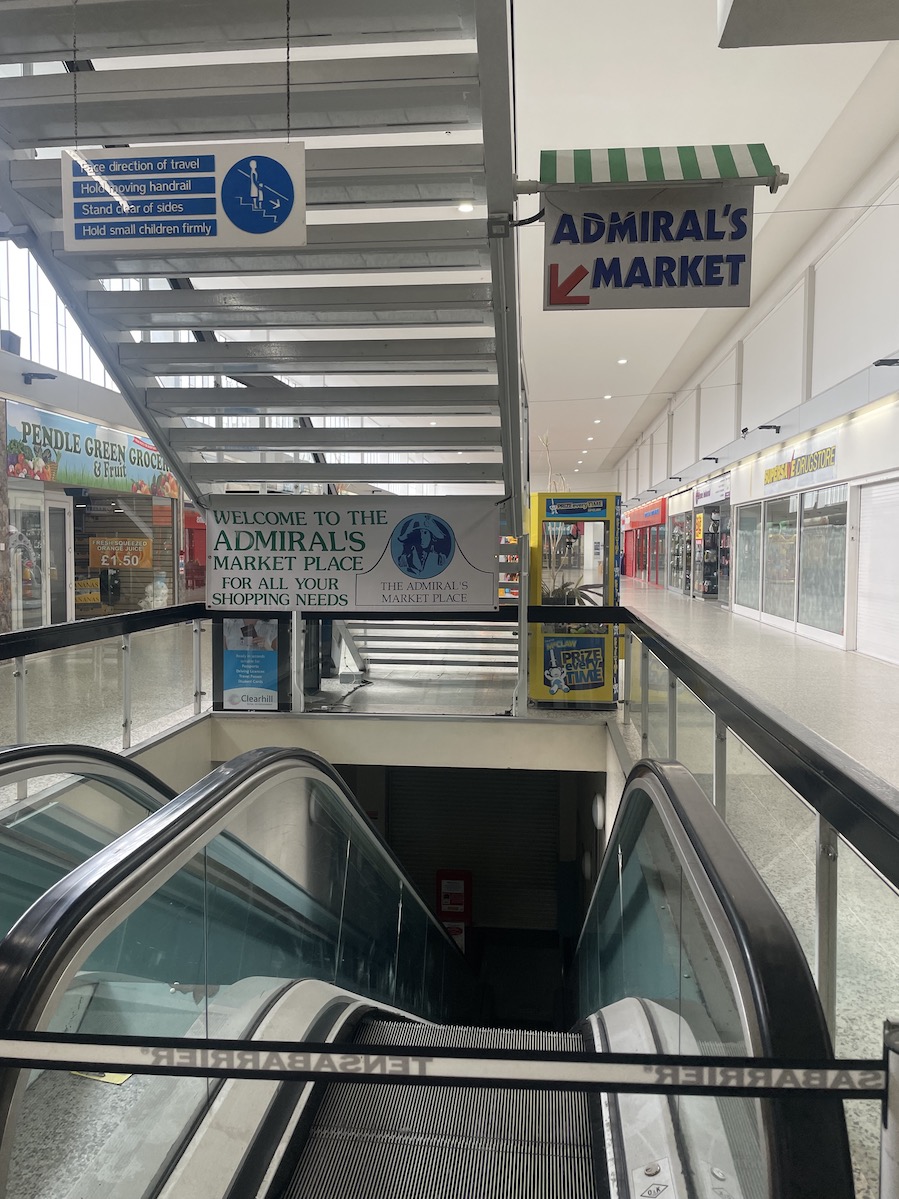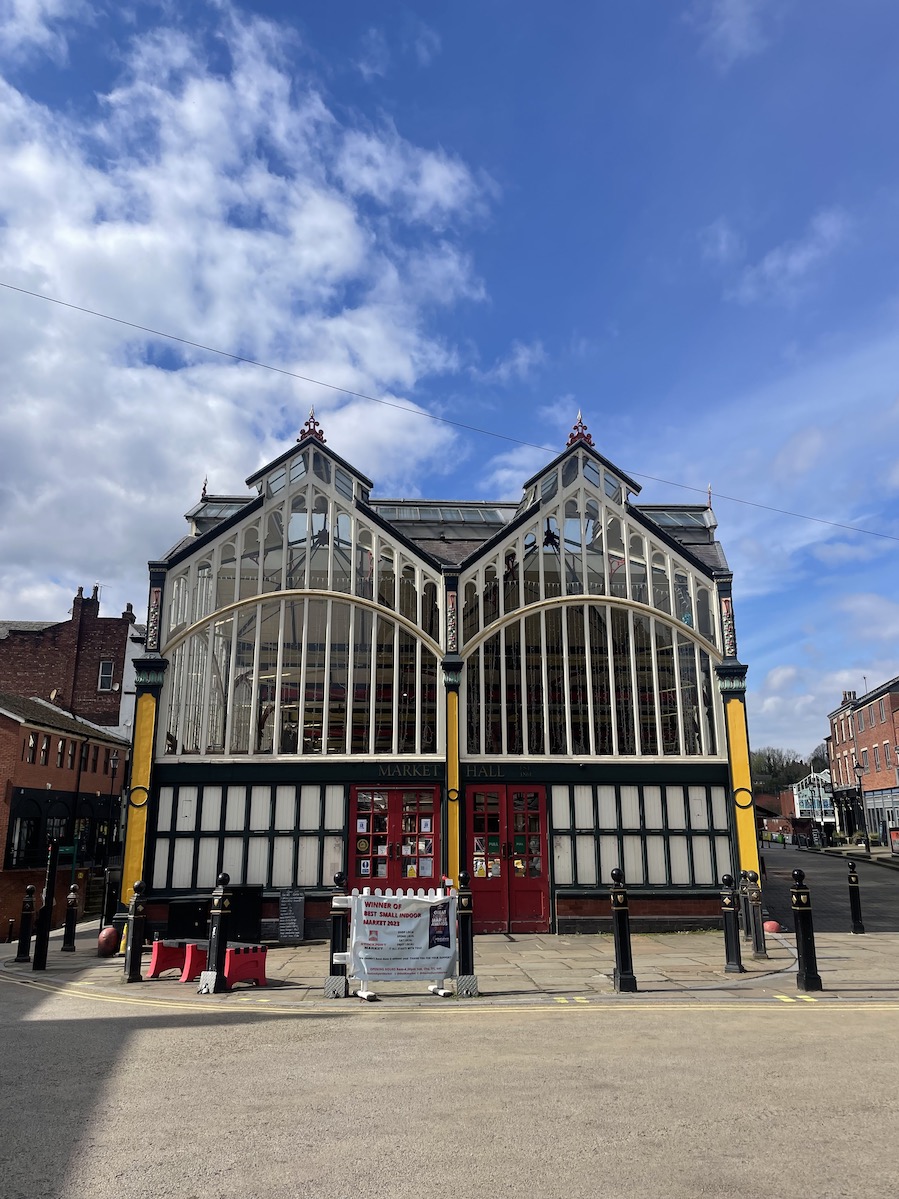Retail politics: The battle to ‘save the high street’
Mary Portas 'Queen of Shops' and then-prime minister David Cameron (Alamy)
11 min read
The battle to ‘save the high street’ has become a staple of UK politics with repeated government-led initiatives. Tali Fraser reports from the front line
There is, as every MP and candidate well knows, nothing in British politics quite like the high street. Emblem of a place’s economy, community and character, it is how residents judge their area’s health.
“They are a spatial representation of where people belong. They’re key to inclusiveness and communities,” says Cathy Parker, professor of retail and marketing enterprise at Manchester Metropolitan University, and one of the country’s leading retail experts.
Consequently, their decline has far greater political resonance than other economic activities that are less bound up with voters’ identities and esteem.
With a shift to online shopping, out-of-town supermarkets, and the challenges around planning and parking, the headwinds against the high street are nothing short of a national obsession. In the past five years alone, the high street has been mentioned in the Commons 2,135 times.
There have been countless efforts to ‘save the high street’. The most recent, part of the government’s levelling up agenda, is termed Build Back Better High Streets.
The upbeat strategy document discusses a range of interventions aimed at turning around the typical markers of failing high streets: falling sales, vacant retail units, and fewer shoppers.
None of these, however, is new. They were discussed by Mary Portas, the so-called Queen of Shops, when she was appointed by the Cameron administration in 2011 to address the issues facing the high street. Grant Shapps, who was local government minister at the time, said he hoped the pilot towns would be “the vanguard of a high-street revolution”.
The Portas review handed £100,000 to 12 towns, hoping to “kick-start a renaissance” on the high street, alongside a push for an end to red tape, wider use of free parking for shoppers and a business-led approach to town centres.
But just five years after the 12 towns were awarded a share of its £1.2m fund and support from Portas to improve trade on their high streets, data published by the BBC showed that the towns had lost 17 per cent of their shops.
Visiting the areas today reveals that while there has been a lastingly positive legacy in some, the Queen of Shops failed to work her magic in others.
In the centre of Nelson, in Lancashire, sits a sculpture that encapsulates some of the area’s issues. The 39ft statue of a weaving shuttle, installed in 2011 to celebrate Lancashire’s textile history, sparked ire because its arrival coincided with the demolition of many of the area’s cotton mills.
 The Weaving Shuttle sculpture in Nelson, locally known as Nelson's Column
The Weaving Shuttle sculpture in Nelson, locally known as Nelson's Column
A folk song next to it reads: “Poverty poverty knock, my loom is saying all day. Poverty poverty knock, Gaffer’s too skinny to pay. Poverty poverty knock, always one eye on the clock. I know I can guttle when I hear me shuttle go. Poverty poverty knock.”
It knocks still. Just a year after becoming a Portas pilot area, Nelson saw a fall in the number of occupied shop units.
The Pendle Rise shopping centre in Nelson once hosted fashion shows and car exhibitions, and was home to independent retailers and, later, bigger national brands.
Now, thanks to antisocial behaviour in the area, a public notice from the centre’s management is taped to its doors. It says children under the age of 16 are not allowed into the centre without a responsible adult.
The majority of its shops, including discount stores, are closed, while “everything must go, store closing” posters litter the few surviving outlets.
Fiona Sharples, who has lived and worked in the town her entire life, says: “I’ve seen Nelson go downhill and it doesn’t look like there’s any way back this time … it was such a great, great town and I find it difficult to put a point on where it went wrong.”
It is incredible to see the change over the years’ from busy, industrial town to the state it is now
The declining state of the area “is quite depressing”, Ms Sharples adds. Working as an estate agent, she has started locking the office door when she is alone: “I don’t feel safe in Nelson.”
Peter Boast, a local business owner, says he recalls when the area received the Portas funding but can’t place where it had gone. Nor has he seen anything yet from the levelling up agenda: “We haven’t noticed anything, but we are hopeful,”he says.
 The closed marketplace inside Nelson's shopping centre
The closed marketplace inside Nelson's shopping centre
In 2021, the town published a masterplan, aiming to regenerate the shopping district, attracting £25m in funding under the government’s Town Deal Fund, which included upgrades to the town’s shopping centre.
But at mention of the shopping centre over the road and its potential future, one of Boast’s employees simply drew their finger across their throat.
Stockport in Greater Manchester might be among the best examples of how a high street can be improved with the involvement of local people.
Professor Parker says the Portas review “raised awareness of the role of people and what they could do for community and businesses”. While the presence of a town team to run the scheme “makes a massive difference”.
Nonetheless, even in Stockport, professor Parker thinks the Portas pilot failed to properly set the teams up with legitimacy “leading to bun fights over power and budget”. In Stockport’s case, she adds, “the team have been able to carry on working on the area so you can see a legacy effect from that”.
Martin Wilson, who runs Rare Mags, a book/magazine shop and events space in the Southport’s Underbanks district – dubbed ‘the Soho of the North’ – says that the Portas pilot is still mentioned, “often as a double-edged sword”.
“It’s good because it’s a bit of a catalyst but it’s also mentioned with a sort of private investigator hat on. Like, where did that money go?”
One of the shops to receive funding from the Portas pilot was the vintage emporium 20th Century Stores. Lynn Mallory, who works at the store, says the effects of the scheme have been “wholly positive” with events such as “foodie Fridays”.
“It has made a difference. It wasn’t huge financially, but it’s just the support and the publicity. It makes a difference, because it’s no small task.”
But as Carl McCabe, the owner of 20th Century Stores for the past three years points out, a number of businesses supported by the scheme have since shut.
“It was a worthwhile exercise and helped a few startups, but as soon as the money was spent those businesses closed down,” he says.
Since then, the town has been undergoing a £1bn redevelopment, which has seen the arrival of the Red Rock entertainment centre, a new business district called the Stockport Exchange, and new apartment complex The Mailbox.
There are still areas of dereliction, even in the popular and trendy Underbanks district – which benefited from shopfront improvements through the Portas pilot – but there has also been a lot of change, especially to Stockport Old Town.
In the five years after the Portas pilot, vacancy rates around the market place reduced by around 40 per cent to 10 per cent of available units – although business owners and the council recognise improvements in parking availability and price need to be made for the area to continue to thrive.
 Stockport's historic Market Hall
Stockport's historic Market Hall
“Even the dreaded Merseyway is getting a bit better,” Wilson, from Rare Mags, jokes. While the store receives “little pots of money” from the council, he says people assume the business is directly supported by government: “People are just so used to seeing places closed, so they think this kind of thing can only be a project or a subsidised thing.”
Stockport is being redefined, Mallory adds, with “someone at the council doing a very good promotional job to brand it: ‘The new Berlin’”.
In Wolverhampton, in the West Midlands, the high street has faced a difficult battle since the Portas review. While the sign for the large department store, Beatties, which closed in 2019, is still up, the beautiful art deco building remains empty – though there is now hope of a new occupant emerging, following the property’s sale earlier this year. The large chain store BHS has shut. And, while homeware chain Wilko came and went, its presence had already helped to knock the independents out.
Brenda Shuttleworth, a retired volunteer, doesn’t think the Portas pilot made much difference, “people just don’t come into Wolverhampton any more because they say it isn’t very nice”.
Once a major hub for coal mining, steel production, and the manufacture of motor vehicles, Wolverhampton has struggled to adapt to the times.
It was a worthwhile exercise and helped a few startups, but as soon as the money was spent those businesses closed down
“It is incredible to see the change over the years, from busy, industrial town to the state it is now,” Shuttleworth adds.
Wolverhampton City Council has recently pedestrianised areas around the high street, with artist’s impressions for the city centre improvement scheme showing a bustling area. But when The House visited there were about only five other people on what should have been a vibrant Victoria Street.
.jpg) The old Beatties building in Victoria Street
The old Beatties building in Victoria Street
The areas that appear to have seen the most development are around the train and bus stations, as one passerby joked: “The best bits of Wolverhampton are the ones taking you out of it!”
In the end, even Portas lost confidence in the scheme she launched. At a British Council of Shopping Centres conference in 2012, she is reported to have said she’d severed lines of communication with the government over worries that saving high streets was “not a number-one priority”.
“Is this a big PR stunt by the government or is this really believing in town centre first?” she asked. “I want to know where we are going.”
It is a question that could still be asked of the government’s subsequent plans for the high street, too.
Take the Build Back Better High Streets strategy, aimed at, as it states on page three, “clearing away pointless red tape”, but which is, in fact, heavy on reviews, codes and manuals.
It has little to say on issues repeatedly highlighted since the Portas review: business rates and operational costs; car parking charges; costs related to other modes of transport and access.
Simply requesting that local communities come together on what it calls a National High Streets Day to “clean up their high street” seems unlikely to work.
Portas has since backed Labour’s plan for the high street instead. She claimed last year she was “absolutely confident” that a Labour government would “breathe life” back into Britain’s high streets; supporting their commitment to scrap business rates to help not just the economy but “the vital sense of community and connection that [high streets] foster”.
Introducing shadow chancellor Rachel Reeves to the stage at the Labour Party conference in Liverpool last year, she said: “I’m as frustrated as you all are [over] what has happened to them over the last 13 years of a Conservative government.”
Perhaps a new government will benefit from a rather unlikely source. While the Covid era may have accelerated a move to online shopping, it also forced millions to work from home. With many appearing in no hurry to return full-time to the office, can local high streets benefit?
Analysis from the Financial Times in 2022 shows that about three-quarters of Britain’s local council areas have seen increased in-person high street sales, post-pandemic.
Professor Parker says that by looking at footfall data “there has definitely been an effect on smaller neighbourhoods and local centres … the smaller centres recovered faster”, so much so that “some places didn’t really seem to have any dip in footfall over Covid, because they were on people’s doorsteps”.
Footfall, she says, is the best performance measure “because it’s not all about spending money”. As she explains: “When you think about pride in place, and place attachment, if someone’s just walking into their local centre and using it, that is good. They’re connected to their locale.”
In terms of consumers, there has been a decade-long shift of people going online to get their shopping in a few quick clicks, prompting the chief executive of the Resolution Foundation think tank Torsten Bell to encourage high streets to “become more about in-person services and less retail”.
That requires long-term vision. Professor Parker says: “People have nice gardens because they tend to them regularly. You could have a landscaper every 10 years and it would look fine for a few months, but then if nobody goes and waters it or weeds it, then it’s back to being overgrown pretty quickly. Places are the same, you need that constant management and care.”
